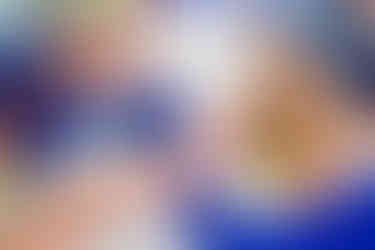This article examines the effectiveness of Art therapy in children and adolescents with ADHD (Attention Deficit Hyperactivity Disorder). An increasing number of children are being diagnosed with difficulties such as ADHD. Working with such individuals is evincing interest among many art therapists. This article explores the understanding of ADHD in children and adolescents and the factors that contribute to the success of art as a therapeutic tool and highlights the application and the unique advantages associated with art therapy. ADHD is a long-lasting and complex disorder that cannot be easily cured. With art therapy child can achieve a certain level of success, if the child-parent-therapist collaboration is ongoing and strong and also if the child practices regularly only then the results will be achieved.
Art Therapy helps children with ADHD to handle emotional problems, develop interpersonal skills, manage behaviour, reduce stress, increase self-awareness, and confidence. Art therapy provides the person with a visual record of the intense feelings or ideas and brings focus. Therefore, art becomes a way to record and re-encounter those feelings or thoughts, again and again, thus making learning easier.
Children with ADHD have shown greater improvement with combined therapy and administered drug. However, Art therapy is proven to be effective in treating several ranges of a subject group especially the ones with ADHD. Art therapy provides the children with the opportunity to learn coping strategies and they also learn that it is not their fault that they cannot succeed at school.
Art therapy provides a visual and kinaesthetic approach to learning for children with ADHD. For children, art is a pleasurable and familiar activity as it offers various benefits (Henley, 1998). Artmaking requires planning and organizing, sharing materials, staying focused on a single task and require listening skills, and sharing space. Art therapy provides a way of observing and assessing children and encourages spontaneous behaviour. Children with ADHD require new experiences, exposure, and constant stimulations, making high sensory exposure to art therapy is a natural fit. Children with the risk of developing depression, low morale, low self-esteem, and anxiety can find Creative Art Therapy (CAT) effective as it helps in improving self-control, increased focus, and emotional well-being in children.
Benefits and Limitations:
Art therapy helps children learn to cope with impulsivity, sequencing, coping, social skills, flexibility, decision making, and make help boost one’s self-esteem. It also provides a sensory experience, which helps the child feel in control and more confident. Kearns (2004) has stated that children having trouble with sensory integration can greatly benefit from art therapy sessions as it can help them to increase their focus as well as facilitate them in social integration. Art therapy has several benefits as a treatment modality, especially with children with ADHD there are several specific advantages:
· It is a child-appropriate activity
· Usage of visual learning skills
· It provides a structure to therapy
· It helps children to express which helps him/ her to repair and restore
· It is helpful in communicating issues, emotions, and conflicts
· It plays a vital role in health, healing, and wholeness
·It also encourages playfulness, divergent thinking, flexibility, humour, risk-taking, independence, and openness.
Smitheman-Brown and Church support the efficacy of Art therapy in two populations, primarily with children with ADHD and secondarily its effectiveness with developmentally delayed children.
A study has shown that colouring mandala is a great centring activity for children with ADHD as it can serve as a non-verbal or less verbal approach. It is very meditative in nature and promotes relaxation, calmness and has been shown to decrease an individual’s impulse behaviour and increase attention span (Green, Drewes, & Kominski, 2013; Henderson, Rosen, & Mascaro, 2007). There is one limitation that there are no empirical studies that prove the effectiveness of this therapy. Another concern to Art therapy is the cost associated with materials required and finding a suitable setting for art therapy can be challenging sometimes too. Having said that Art therapy is the most valuable intervention method for children with ADHD- Safran (2002). It’s a great way to allow express a child’s hidden emotions and feelings.
Conclusion
Art therapy is an active form of therapy that includes a number of experiences at the kinaesthetic/sensory level, perceptual/affective level, cognitive/symbolic level, and has a visual approach to learning for children with AD/HD. It is the most practical tool for enhancing the skills that children with AD/HD require in order to be successful. A trained art therapist plays a major role in guiding the child through the art journey. The artwork becomes a powerful tool for the therapist to process, analyze, understand, intervene, and assist children and parents in effectively coping with ADHD.
Art therapy allows the child to communicate problems or conflicts in a non-threatening manner through art expression, which is a natural language for children. Children learn more about their condition through drawings which bring self-acceptance, self-discovery enhances their morale and self-esteem. In group settings, children get an opportunity to understand each other, learn from each other, and feel safe thus increasing social connection.
References:
Flory K, Molina BS, Pelham WE Jr, Gnagy E, Smith B J, Childhood ADHD predicts risky sexual behavior in young adulthood and Clin Child Adolesc Psychol. 2006 Dec; 35(4):571-7. [Pub Med]
Green, E. J, Drewes, A. A., and Kominski, J.M (2013). Use of Mandalas in Jungian play therapy with adolescents diagnosed with ADHD. International Journal of Play Therapy, 22 (3), 159 -172. http;//doi.org/10.1037/a0033719/
Henderson, P., Rosen, D., & Mascaro N. (2007). An empirical study on healing mandalas. Psychology of Aesthetics, Creativity and the Arts, 1 (3), 148-154 Http:/doi.orf/10.1037/1931-3896.1.3.148/
Henley, D. (1998). Art Therapy in a socialization program for children with Attention Deficit hyperactivity disorder. American Journal of Art Therapy, 37, 2-12.
Jung, Carl Gustav. Memories, Dreams, and Reflections. New York: Panthenon: 1961.
Kariž, Barbara. (2003). Art therapy and Adhd. 10.13140/2.1.5095.4248.
Kearns, Diane. (2004). Art Therapy with a Child Experiencing Sensory Integration Difficulty. Art Therapy: Journal of the American Art Therapy Association. 21. 10.1080/07421656.2004.10129551.












Comments